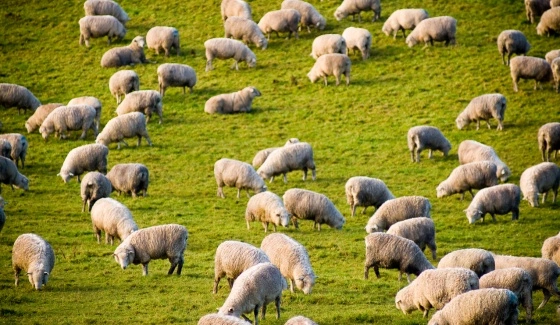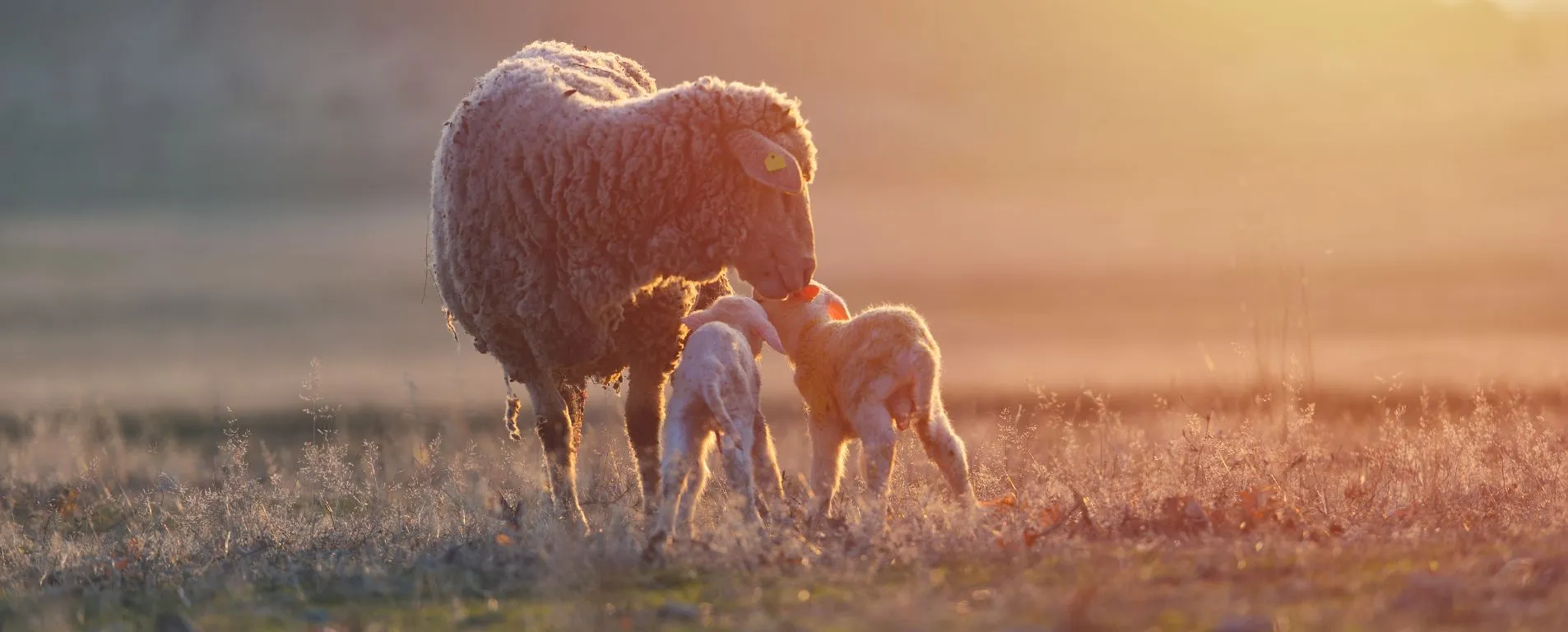
In this episode of Head Shepherd…
Ginny Dodunski, large-animal vet and Wormwise Programme Manager in New Zealand, discusses internal parasites and drench resistance. With irrigation and the ongoing intensification of sheep farming in New Zealand, a future with fewer chemical options for managing worms is requiring a big shift in perspective. Added to this, uncertainty about the future availability of long-acting capsules is speeding up the need for change.
This conversation highlights the importance of integrating nutrition, management practices and genetics, and Ginny shares some practical tips to minimise the impact of worms and drench resistance in your sheep flock. You can listen to the full episode on Head Shepherd, where we dive into more detail.
Parasite resistance and its implications
Drench resistance is not a new issue, but the ability of internal parasites to adapt and evade the available chemicals keeps growing as a concern for sheep producers. Their rapid breeding cycle (under ideal conditions, worms can breed every three weeks), coupled with massive genetic diversity within parasite populations, puts their hosts (who breed only once a year) and the chemicals we have available, at a real disadvantage. As Ginny points out, “The maths is stacked against the drugs…. Parasites were always going to evolve resistance to drugs.”
The more frequently and extensively we use anthelmintics across our flocks, the quicker parasites become resistant to what we’re using. Each day that the worms are exposed to the chemical is another opportunity for them to breed and change adaptively. “It depends on how we use those drugs, and how much we use those drugs, and over what percentage of the animals on our farms we use those drugs, as to how quickly that's going to develop,” Ginny explains.
Larval challenge
Ginny’s experience is that many farmers underestimate the impact of day-to-day larval challenge on stock. She notes that anthelmintics tend to mask the visible signs of parasitism, while the cost of high larval challenge goes largely undetected. “When we've got animals - say lambs on a 28-day drench rotation - other than probably the two days after that drench, every other day those lambs are being exposed to some sort of larval challenge - unless they're on clean feed. The cost of that to our systems is actually bigger than the cost of the clinical parasitism that we see when the wheels really fall off.”
In Ginny’s view, the most important thing for managing worms is understanding how to minimise the number of larvae your sheep are exposed to. Some degree of exposure remains inevitable and eradication is not an option, but reducing the level of challenge needs to be at the forefront of how we think about managing our stock, pastures and crops throughout the year. That said, in some farming systems, minimising larval challenge is more difficult than in others.
Sheep-dominant properties, with a high proportion of young animals throughout the year, and mainly permanent pasture, face more obstacles to reducing the larval load. Ginny encourages those properties, where worm resistance to chemicals is rising, to reconsider their farm policies and systems, to see if the balance can be shifted to lessen the larval challenge and reduce reliance on anthelmintics.
Where it is possible to get an environmental break in the cycle of larval exposure, such as a cold winter, dry summer or significant amounts of crop, it can certainly make the effect of worms on stock easier to manage.
Prioritising the nutrition and condition of undrenched ewes
The concept of refugia, particularly the details of managing a particular paddock or mob of animals, has led to some head-scratching over the years. At a big-picture level, Ginny observes that “...the farms that still have no drench resistance or very minimal drench resistance have a long history of not drenching their ewes” and “...at a farm system level, that undrenched ewe flock is massively protective in terms of not creating further drench resistance on a farm.”
She recognises that reversing out of situations where there are severe levels of resistance may not be achieved by having an undrenched ewe flock alone, but she continues to see progress where that tool is part of the equation. For this tactic to be effective, undrenched ewes need to be fed well and given the opportunity to maintain optimal body condition for as much of the year as possible.
Ginny’s advice is to put in place “...a best-practice system around that ewe flock, in terms of feeding and body condition and making that ewe flock the priority - instead of pinching feed from the ewes by trying to finish animals that probably should have been gone.” She sees that “...having a high-performing, well-fed, well-conditioned and then undrenched ewe flock - that's just a really powerful thing from a farm system and profitability point of view, completely aside from the drench resistance stuff.”
Young sheep and refugia
Lambs are born with no natural immunity to worms - no matter their genotype - and need to develop their immune response over time. During the first year of life, they are particularly vulnerable to the effects of worms. Understandably, farmers have relied on drenches to manage that risk. Ginny’s suggestions for managing refugia in a mob of young sheep include adding other sheep to the lamb mob, such as older ewes, two-tooth ewes, or even hoggets that have weaned their first lambs.
For properties where close monitoring is feasible, leaving a percentage of lambs undrenched or extending the time between drenches can be an option. Ginny stresses the importance of keeping a close eye on lambs and providing them with feed that has the lowest possible larval challenge, to keep them within a safe zone where they are building their immunity without getting clinically parasitised. “We know that in the lamb's first year of life, they're going to develop their immunity to worms. And they can do that very quickly and very effectively and efficiently, just at a low-trickle challenge of worms,” says Ginny, but monitoring them carefully is essential.
Faecal egg counting is an important part of the monitoring toolbox. Ginny makes the point that weekly faecal egg counts at the vet clinic may not be achievable for some, but there are other options, including automated DIY solutions, that can give you enough data - over time - to start making more informed decisions.
Getting the most benefit from your grazing rotation
While it is not possible for some steep hill country properties to run a high number of cattle, Ginny observes, “The closer that you go to a 50:50 sheep-cattle ratio or even more cattle than sheep, those farms just have a much more significant ability to manage the worms in their sheep without drench.” Where high cattle numbers are not practical, Ginny advises taking a closer look at how sheep grazing rotations are structured.
A ‘truck-and-trailer’, where the most vulnerable animals (such as lambs) are at the front of the rotation, gives them the first pick when the larval challenge is lowest. Following them with the next most susceptible animals (such as lighter ewes), and the least-vulnerable animals at the end of the rotation acting as a vacuum cleaner for larvae.
This approach reduces the worm challenge to lambs sufficiently for them to perform well, with at least a proportion of ewes following them remaining undrenched to provide refugia. The ewes continue to require careful management - maintaining their feed intake and body condition - to ensure that the higher larval challenge they will be exposed to doesn’t cause issues.
Managing worms in twin- and triplet-bearing ewes without capsules
Heading into lambing with limited or no access to slow-release capsules needs a well-thought-out series of policy and management changes for many operations. Ginny acknowledges that for some farmers “...it's really scary and probably dangerous to pull them all out in one year. But I think, in the end, it has to be the aim because the parasites are at the point where they're evolving so much resistance to them that they're not going to work.”
Twin- and triplet-bearing ewes in lighter condition are going to be most challenged by worm exposure. Identifying and prioritising them within the grazing rotation, in terms of both feed quality and larval challenge, is key. Ginny suggests that there may be a transition period for some farms in the near future, with the most vulnerable animals still receiving a capsule (if available) and the less susceptible animals being left untreated.
For any ewes not receiving a capsule, Ginny’s advice is to ensure that they “...have got access to enough high-quality, cleanish feed and that they’ve got enough condition on their backs to withstand not having a capsule.” She circles back to keeping larval challenge front of mind, to stop contaminating the farm with worm larvae and reducing the exposure of lambing ewes to worms. In a nutshell: “Focus on everything you can around body condition, good feed levels and minimising larval challenge.”
Listen to the full interview with Ginny Dodunski on the Head Shepherd podcast here.
What is Wormwise?
In the early 2000s, a New Zealand farmer survey highlighted that rather than being a local problem in just a few districts, worm resistance to drenches had become a national issue. In response, Wormwise was launched, a collaboration between Beef + Lamb (B+LNZ), DairyNZ, the Ministry for Primary Industries (MPI), the Animal and Plant Health Association of NZ Inc (APHANZ) and the New Zealand Veterinary Association (NZVA). Wormwise workshops are held across the country, with facilitators in each district, and further information is available on the Wormwise Facebook page, the Beef+Lamb New Zealand (B+LNZ) website and B+LNZ’s social media channels.








